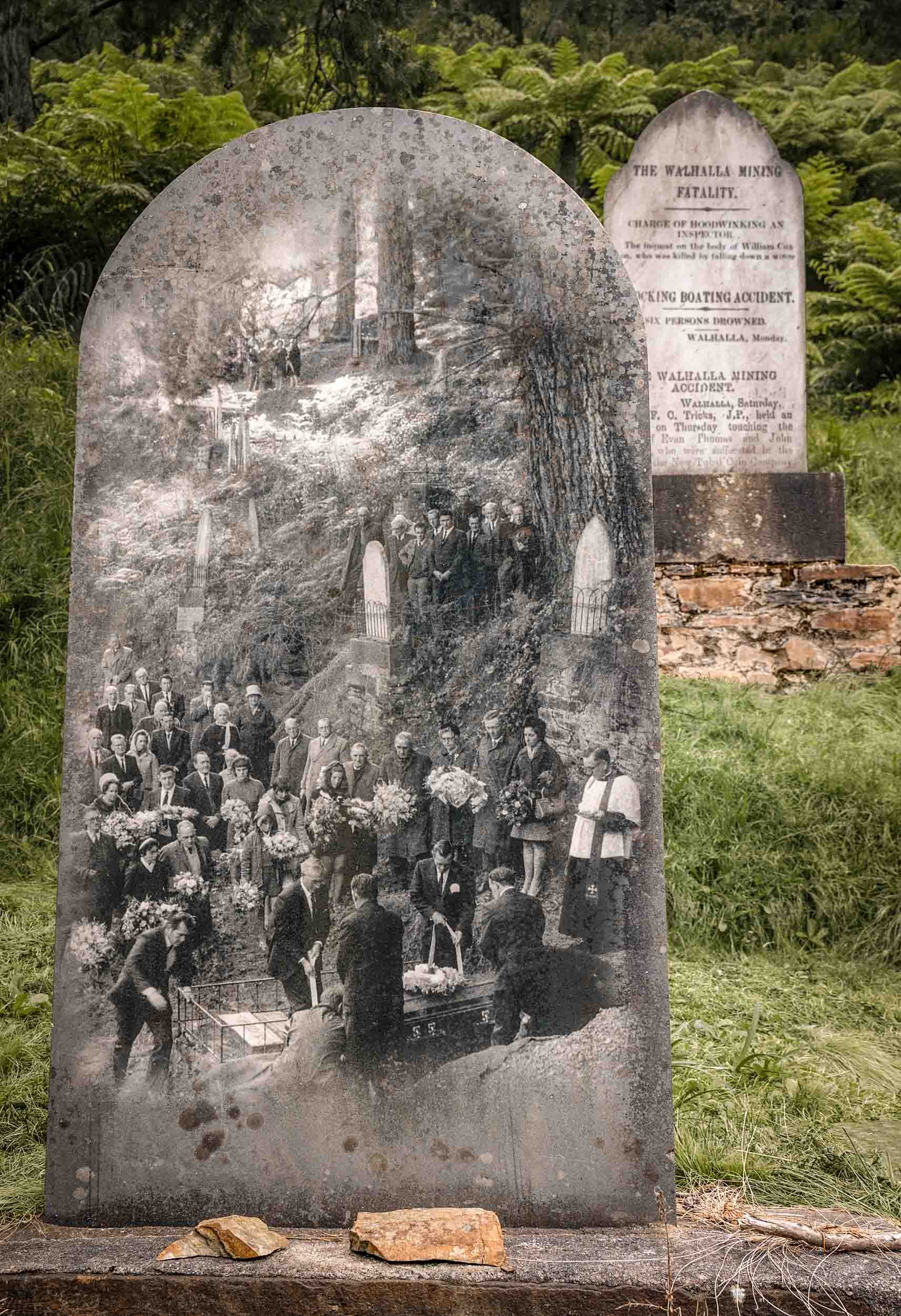Walhalla Cemetery
Local rumour goes – apparently untrue – that the cemetery in Walhalla is so steep that people are buried standing up. With the narrow valley floor given to activities around gold mining and daily life, the steep slope near the end of town was the best practical option available. The old image superimposed on the tombstone was taken in 1970. It shows the funeral of Dominic Guatta, the last recognised goldminer to be buried in Walhalla. His grave was marked by a cross; one of more than 1300 burials within the cemetery, many of which can no longer be found. The earliest recorded burial occurred in 1866, just four years after the discovery of gold in the creek which passes 25 metres below along the valley floor.
Local rumour goes – apparently untrue – that the cemetery in Walhalla is so steep that people are buried standing up. With the narrow valley floor given to activities around gold mining and daily life, the steep slope near the end of town was the best practical option available. The old image superimposed on the tombstone was taken in 1970. It shows the funeral of Dominic Guatta, the last recognised goldminer to be buried in Walhalla. His grave was marked by a cross; one of more than 1300 burials within the cemetery, many of which can no longer be found. The earliest recorded burial occurred in 1866, just four years after the discovery of gold in the creek which passes 25 metres below along the valley floor.
Local rumour goes – apparently untrue – that the cemetery in Walhalla is so steep that people are buried standing up. With the narrow valley floor given to activities around gold mining and daily life, the steep slope near the end of town was the best practical option available. The old image superimposed on the tombstone was taken in 1970. It shows the funeral of Dominic Guatta, the last recognised goldminer to be buried in Walhalla. His grave was marked by a cross; one of more than 1300 burials within the cemetery, many of which can no longer be found. The earliest recorded burial occurred in 1866, just four years after the discovery of gold in the creek which passes 25 metres below along the valley floor.
Historical image: Courtesy of Walhalla Museum. Photographer: Bruce Postle/The Age
Historical text: National Library of Australia
Price is in Australian dollars. Download is available immediately after payment is accepted.
Please feel free to enjoy this photographic art image in either the digital or physical print world in non-commercial applications. The downloadable file is suitable for printing images up to around A3 in size (approximately 12in x 16in).

